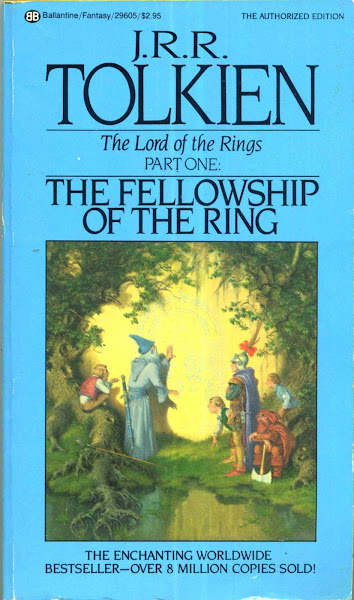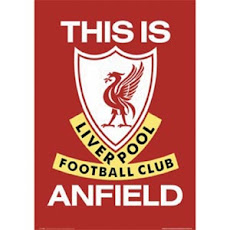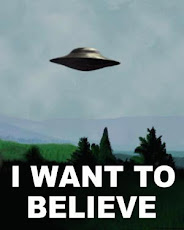PHILADELPHIA -- We've seen a World Series turn on a magical swing of the bat. We've seen a World Series turn on a flash of leather. We've seen a World Series turn on a gaffe that history never forgets.
But we've never seen this.
We've seen Jim Leyritz change a World Series. We've seen Kirby Puckett change a World Series. We've seen Bill Buckner change a World Series.
But we've never seen this.
We've never seen a World Series turn because a man stole two bases on the same pitch.
But we've seen it now, all right.
We've seen Johnny David Damon do it with our own eyes, and we're still not 100 percent sure it really happened. But an hour later, the scoreboard at Citizens Bank Park still read: Yankees 7, Phillies 4. So it must have happened. In real life. In the ninth inning of a World Series game people are going to talk about for the rest of their lives -- and probably a thousand years after that.
Because it happened the way it happened, the Yankees now lead this World Series, 3 games to 1.
Because it happened the way it happened, the defending champs' only shot at another parade is to do something now that no team has done in 30 years (since the 1979 Pirates) -- win Game 5 at home and then motor up the Turnpike and win Games 6 and 7 on the road.
But mostly, because this play happened the way it happened, Game 4 of this World Series is going to live on in Fall Classic lore for generations, any time people begin to conjure up the once-in-a-lifetime plays that can't possibly have happened on this stage -- but somehow did.
"You know how people always tell you that they've been in baseball for 40 years, 50 years, and things happen every game that they never saw?" asked Yankees coach Tony Pena, after his Sunday night had turned into Monday morning and he was still trying to digest one of the most astonishing finishes to any game in his 35 seasons in baseball.
"Well, I've never seen that before," said Tony Pena. "I never saw that before in my life."
Hey, Tony, you should know this: You've got lots of company.
We've seen a lot of baseball games. We've seen a lot of postseason games. We've seen a lot of World Series games. But we've never seen anything quite like Johnny Damon, racing the baseball to second base in the ninth inning of a tied World Series game -- and then picking himself up and stampeding all the way to third, as 46,000 occupants of a stunned ballpark turned and asked each other: What just happened?
One moment, they'd just seen the Phillies' previously M.I.A. third baseman, Pedro Feliz, tie this game with a shocking, two-out, two-strike, eighth-inning homer off Joba Chamberlain. And that quickly, after three hours of waiting for something, anything, to shred their vocal cords about, these people had flipped on their bedlam switch.
They'd watched the man who threw the last pitch of the last World Series, Brad Lidge, come sprinting in from the bullpen. They'd seen him pop up Hideki Matsui, and strike out Derek Jeter, and get within one strike of blitzing through a dominating 1-2-3 ninth inning.
And then …
"It all happened so fast," said Lidge.
Boy, did it ever. Unless something equally unprecedented goes down in the next day or two or three, what happened next is going to be the defining moment of this World Series.
Ten years from now, 20 years from now, 50 years from now, we won't be remembering Cliff Lee's Game 1 masterpiece or Alex Rodriguez's replay-aided home run off a TV camera. We'll be remembering Johnny Damon's excellent first-to-third adventure. And so will he.
"I'm just glad," the 35-year-old Damon chuckled later, "that when I started running, I still had some of my young legs behind me."
But Johnny Damon didn't just pull off this amazing November magic trick with his legs. He couldn't have done it without his bat. And he couldn't have done it without his always-churning brain cells.
He couldn't have done it, first of all, without the single greatest at-bat of this World Series -- a nine-pitch duel with Lidge that included a gritty battle back from a 1-and-2 hole, four foul balls, a foul tip that barely squirted below catcher Carlos Ruiz's mitt and, finally, a soft single to left on a 3-and-2 fastball on the outside corner.
Lidge's take: "The whole thing came down to a really good at-bat by Damon. He fouled off some real good sliders. We kind of kept going back and forth. And finally, he got a fastball away and did a really good job of serving it out to left field."
Damon's take: "I kept chasing that slider down, and I was able to force it to 3-2, and then I kept sitting slider, and he kept throwing the fastball. They really don't teach you to do it that way. They normally always tell you to look fastball because if you sit slider, it would be too tough to catch up to a fastball. But I felt like his slider made me look silly on a couple pitches. So I kept sitting slider and just reacted to the fastball."
So there he was on first base, with Mark Teixeira stalking toward home plate. And because Teixeira was stalking toward home plate, the Phillies did what they always do when Teixeira is up there hitting left-handed -- morph into The Shift.
Jimmy Rollins edged from shortstop over to the right of second base. Third baseman Pedro Feliz trotted over to play where the shortstop normally plays. And -- you might want to take notes on this -- nobody whatsoever was watching third base. That was, right, nobody.
And that little vacancy was about to turn into a biggggggg problem.
As Damon led off first base, there was never any question he was going to be stealing second -- because Lidge (who had just one runner caught stealing in 12 stolen-base attempts this year) isn't what you'd call fanatical about holding runners on. So the only question was when.
And the answer turned out to be: Very first pitch.
Asked later if he expected Damon to take off immediately, Lidge replied: "Not first pitch. I mean, I know it's a possibility. … Obviously, sometimes they take off on the first pitch. So you just try to be as quick as you can to the plate, and keep him close to the bag and kind of see what develops."
But nobody ever would have figured this would develop.
Damon got a huge jump. Feliz trotted over to the bag to cover. Ruiz couldn't get much of a grip on a slider in the dirt and could only dribble a late throw to the bag. So Feliz had to scramble just to hang onto the baseball. And as he lurched toward the wrong side of second base, Damon bounced up and took off toward that base 90 feet away that nobody was minding.
Feliz tried to join the footrace, then gave up after a couple of strides. And nobody knew it at the time, but this game -- and possibly this World Series -- would never be the same.
Two pitches later, Lidge would hit Teixeira in the arm with a fastball. Two pitches after that, Alex Rodriguez would rocket a game-winning double to the track in left. Five pitches after that, Jorge Posada would single in two more runs.
Moments after that, Mariano Rivera would buzz through the Phillies, 1-2-3, in the ninth. And the Yankees were one win away from the parade floats.
All because Johnny Damon somehow pulled off the ultimate two-for-one sale -- two stolen bases on one pitch.
Damon admitted afterward he had never done this before. And, in fact, it wasn't immediately clear the last time anyone did this. But Damon said he'd been talking about it and thinking about it all year, since it became clear The Shift was going to be a regular feature of Teixeira's left-handed at-bats.
There's a big, big difference, though, between thinking about this and doing it with two outs in the ninth inning of a World Series game. So "you'd better be sure," said his manager, Joe Girardi, "because you've got Tex and A-Rod up."
Hey, good point. So when exactly, Damon was asked, was he sure he was going to be safe at second?
"Probably when I was halfway down," he said, "because I mean, I know that I still have some decent speed left in the tank. But I was just hoping. I knew Pedro's speed, also."
And by that, of course, he meant that Feliz isn't quite Usain Bolt. So "if it was Chone Figgins, that might have been tough," Damon chortled. "I just went off of instinct. And fortunately, it worked out."
But why did it work out? That was the pivotal question here: Where did the Phillies screw this up, other than their decision to use The Shift in this spot in the first place?
"To be honest," Lidge said, "that's not really something you go over a lot. I don't know who's supposed to cover third on that. Just kind of a weird play."
The normal way this works, actually, is that it's the pitcher's job to scramble over there. But Lidge was so locked in on pitching to Teixeira, he admitted later he forgot all about that shift. So when Damon took off for third, it "really surprised me," Lidge said. "I thought we had him. I didn't realize there was nobody at third base."
Oh, there was nobody at third base, all right. And no one on the field was more aware of that than, well, the third baseman.
"I know nobody was on third because I was shifted to the other side," Feliz said. "I got the runner (i.e., he was responsible for covering a steal at second), and went to the bag and he saw nobody covered third and he took off. It's a tough stuation. You have to go to [second] and J-Roll has to back me up. So nobody is on the other side, and he took off.''
But this wasn't Feliz's fault, either. It was Rollins' responsibility to decide who would cover second on a steal. So it was the shortstop who blamed himself afterward for not making sure everybody knew their assignment.
"I'm the captain of the infield," Rollins said. "It's my job. … I didn't signal to Brad to make sure he gets to third on a throw. All you've got to do is take two steps in that direction and you stop it right there. But I didn't do my part in making sure he knew the defense we were in."
So it was all these forces, all these decisions, all these miscommunications and one brilliant stroke of genius by Johnny Damon that managed to converge at this remarkable point in time. And the result was a play we'll be rehashing for a millennium.
"It is unusual. That's for sure," Lidge said. "You kind of wonder how that happens -- or, I guess -- how it doesn't happen more often, with The Shift on. Hopefully, we'll figure out a way to prevent that from happening again."
Yeah, they definitely ought to put that on the old to-do list, all right. But it's a little late now.
What the Phillies really need to do is figure out a way to win three huge baseball games in a row. Or they'll have the next four months to rehash what went wrong on an unforgettable Sunday night in November.










No comments:
Post a Comment